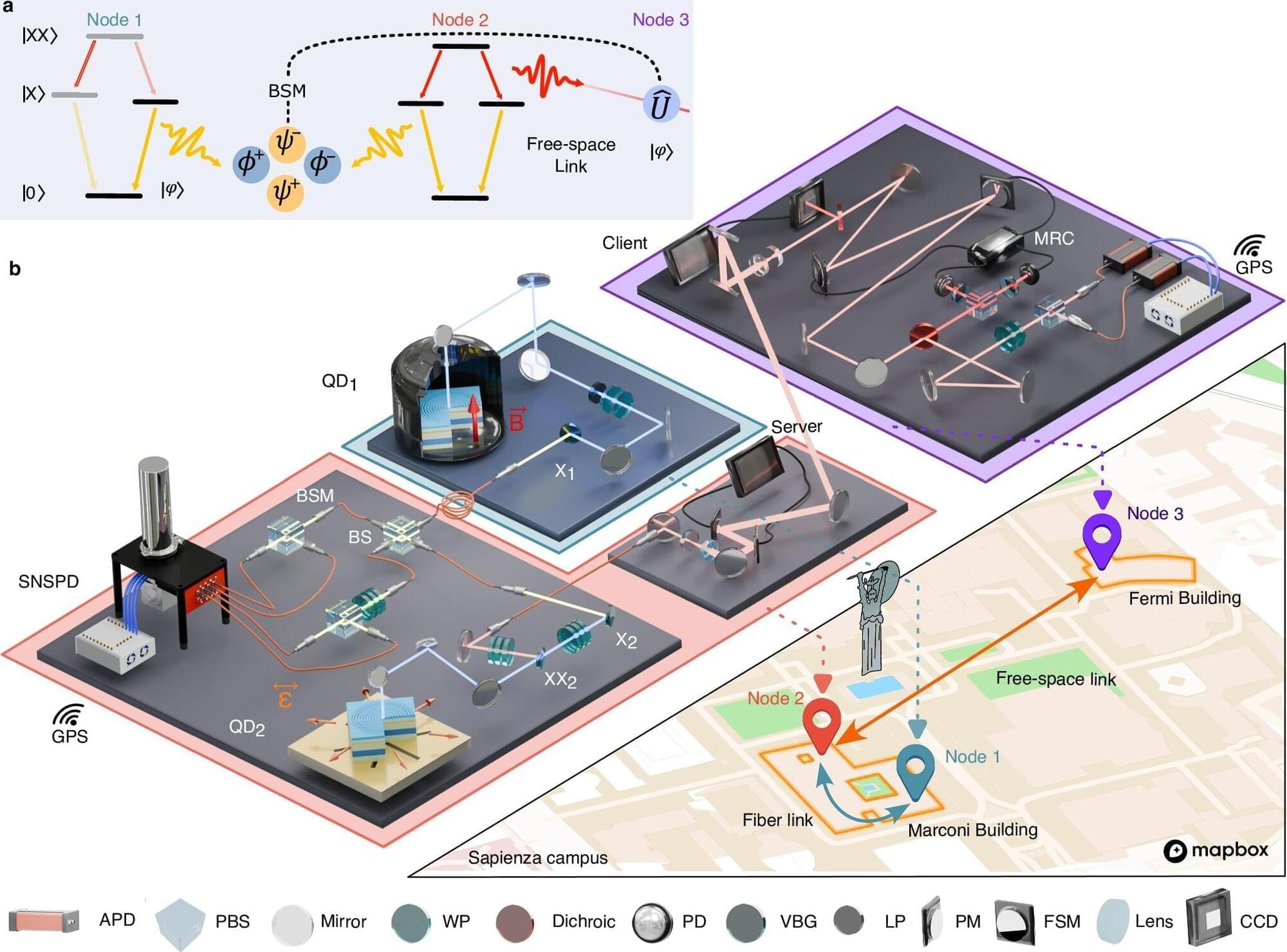An international research team involving Paderborn University has achieved a crucial breakthrough on the road to a quantum internet. For the first time ever, the polarization state of a single photon emitted from a quantum dot was successfully teleported to another physically separated quantum dot.
This means that the properties of one photon can be transmitted to another via teleportation. This is a particularly vital step for future quantum communication networks. For example, the scientists used a 270m free-space optical link for their experiments. The results have now been published in the journal Nature Communications.









